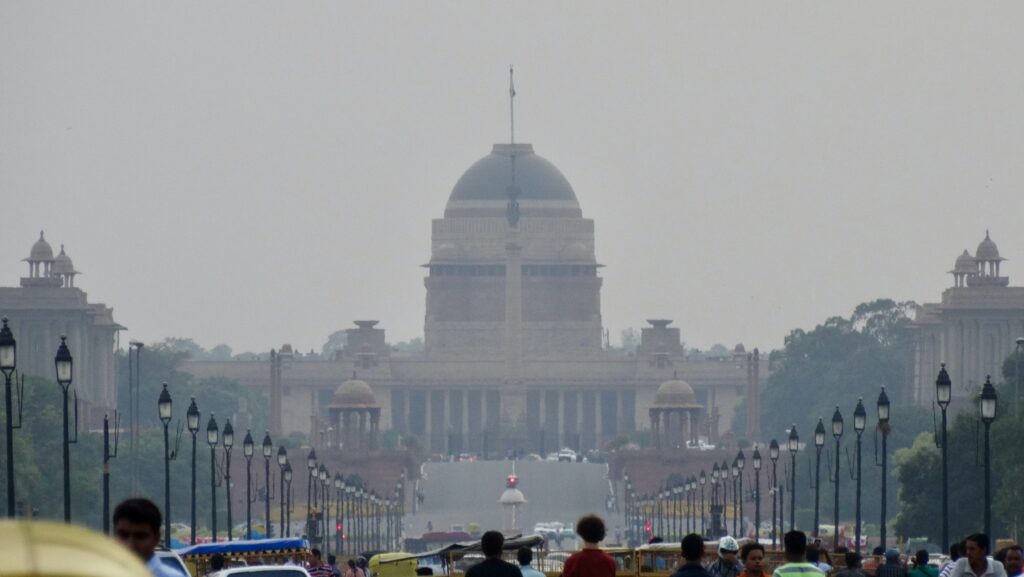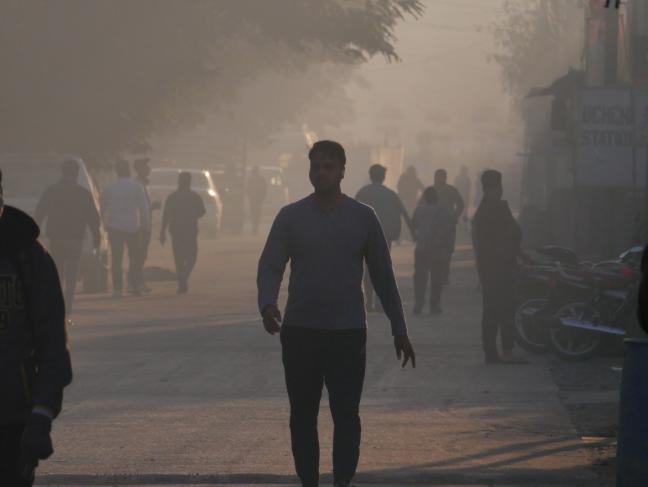
The issue of Delhi’s poor air quality resurfaces periodically in public consciousness. It garners attention on social media, in newspapers and in scientific studies, largely during winter months. During this period, Delhi’s air quality index drops from “poor” to “severe” across most monitoring stations.
The World Health Organization (WHO) recommends air quality standards with limits on air pollutant concentration, and surpassing these limits can be harmful to humans. Particulate Matter 2.5 (PM2.5), a pollutant measuring less than 2.5 microns in size, can traverse the respiratory system and enter the bloodstream, adversely impacting human health. During 2021 and 2022 the city reported an average PM2.5 concentration of 100 micrograms per cubic meter (μg/m3), or 1900% of the WHO’s recommended limit of 5 μg/m3, which can severely impact residents’ health. To ensure the wellbeing of our cities, effective and efficient air quality management is a necessity.
| Air Pollution Sources in Delhi | PM2.5 Percentage Contribution |
| Vehicle exhaust from petrol, diesel and gas combustion | 10–30% |
| Dust from roads and construction activities | 10–30% |
| Industrial sources, including power plants | 10–30% |
| Residential cooking and heating activities | <10% in summer and <30% in winter |
| Open waste burning | 5–15% |
| Power plants (mostly outside city limits) | <7% |
| Dust storms as a seasonal, regional source | <5% |
| Agricultural residue burning as a seasonal, regional short-term source | <3% |
Existing Policy Initiatives
The Union Government’s Graded Response Action Plan, the National Clean Air Programme and the Commission for Air Quality Management were developed to address Delhi’s air pollution. Under these programs several policy initiatives were implemented that help manage air pollution.
Replacing diesel engines in buses with compressed natural gas and encouraging electric vehicle use by providing incentives – including offering scrappage of old vehicles, loan subsidies, discounts at charging stations, road tax exemptions and registration fee reductions – were some of these key initiatives. In 2022 Delhi had over 160,000 electric vehicles on the road, with the Delhi Transport Corporation having 150 electric buses in its fleet. In the years to come both numbers are expected to increase with the electric bus fleet expected to reach 1500. The odd-even initiative also reduced traffic and air pollution during the harshest months to a lesser extent. The Delhi Metro Rail, one of the city’s biggest public transportation systems with a pre-pandemic ridership of 6 million, also played a significant role in reducing air pollution.
In addition, Delhi implemented advanced vehicle and fuel emission standards with the introduction of Bharat Stage-VI in 2017 (three years before its nationwide launch in 2020). In the industrial sector no facility is permitted within the National Capitol Territory of Delhi to use fuel other than piped natural gas, electricity or liquified petroleum gas.
While progress has been made in the transportation and industrial sectors, opportunities remain for improvement in other sectors. For instance, waste burning is an outcome of a lack of proper solid waste segregation and low awareness around implications. Another sector that sees high emissions is the construction industry: it contributes 21% and 8% of PM10 and PM2.5 respectively, followed by household cooking, waste burning and eateries. Clean construction activities are not being implemented at scale, and as a result, construction activities are banned during poor air quality episodes, adversely impacting construction workers.
A Way Forward: Bridging the Gaps
Delhi has an opportunity to expand its air quality management toolkit by examining best practices followed in other parts of India, specifically in construction and solid waste management. For example, the Surat Clean Air Action Plan (SCAP), under which India’s first clean construction handbook and a pilot-level mitigation strategy for clean construction practices were prepared.
The initiative helped collect data on construction and evaluate potential control measures to reduce air pollution. After a successful first pilot this practice is now being replicated at various construction sites across Surat. Another example from Surat is their waste management strategy; a SCAP study discovered the rate of open waste burning dropped from 25% in 2015 to 2% in 2020 in the city.
Indore, India’s cleanest city for six years, is known for its robust solid waste management system which includes 100% waste segregation at source, door-to-door collection and treatment of waste. Leveraging insights and experiences from Indore and Surat could significantly strengthen Delhi’s efforts to tackle air pollution.

Finally, adopting an airshed-oriented strategy is essential, not only for comprehending emission sources but also for effectively executing policies at the grassroots level for improved outcomes. Raising awareness through public engagement and participation, coupled with a comprehensive approach encompassing all emission sources can play a pivotal role in diminishing air pollution in the Delhi National Capitol Region.
This article originally appeared on WRI-India.org.
Sanjar Ali is Senior Program Associate, Air Quality for the Sustainable Cities & Transport program at WRI India.
Bhavay Sharma is Senior Program Manager, Air Quality at WRI India.
Shailendra Kumar Yadav is an Assistant Professor for the School of Earth & Environmental Sciences at Babasaheb Bhimrao Ambedkar Central University.








